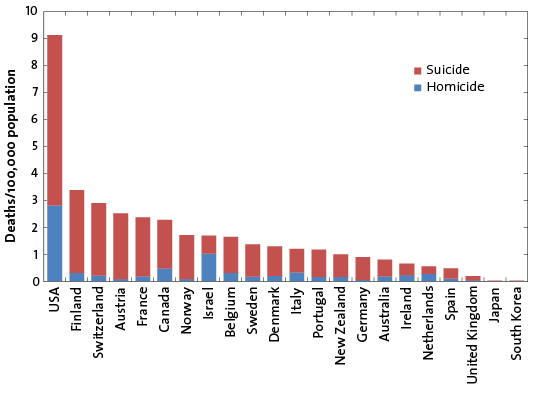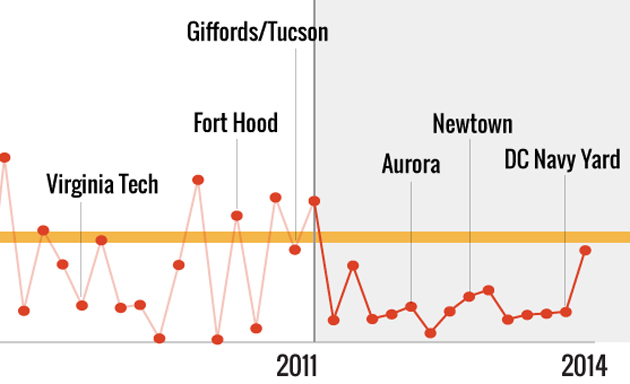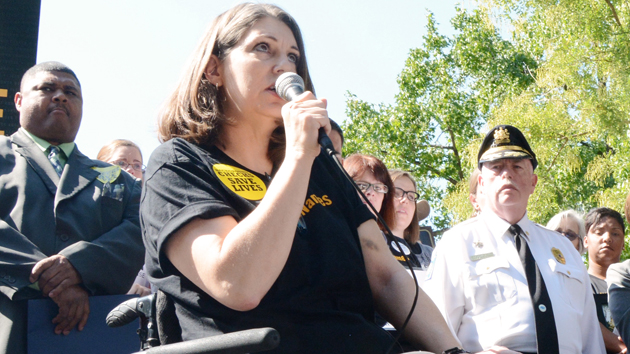A study published this week in the Annual Review of Public Health summarizes some basic, sobering stats about about gun violence in America. The author, University of California-Davis doctor and researcher Garen Wintemute, used statistics from the Centers for Disease Control to track mortality rates from firearm suicides and homicides in the United States over more than fifty years.
Here are some of the findings from Wintemute’s study, in a handy—if grisly—Q&A format:
Which kills more Americans, guns or cars?
Answer: Car accidents, but firearms deaths are catching up. In some states, guns do kill more people than cars—check out this map.
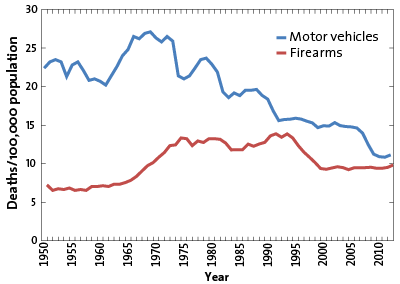
Which kills more people: gun homicides or gun suicides?
Answer: Suicides, by a long shot.
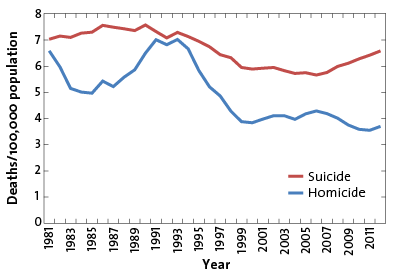
At what age do gun suicides and gun homicides kill the most people?
Answer: In 2012 (the most recent data available), gun homicides spiked among people in their late teens and early twenties, and declined in older populations. Suicide deaths peaked among people in their mid-twenties and gradually increased with age.
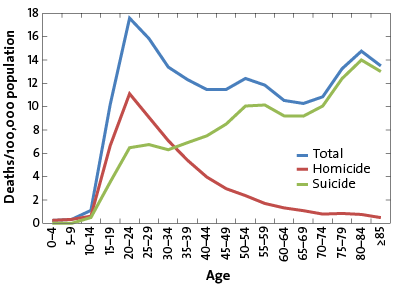
Which demographic has the highest gun homicide rate?
Answer: Young black males, by a long shot. The first chart shows the age breakdown for men in 2012; the second shows the same for women. Firearm homicide death rates peak among black men and women ages 20 to 24. But note the difference in scale: Among black males that age, the rate is nearly 90 deaths per 100,000 people, while for black females, the rate is about 7 deaths per 100,000.
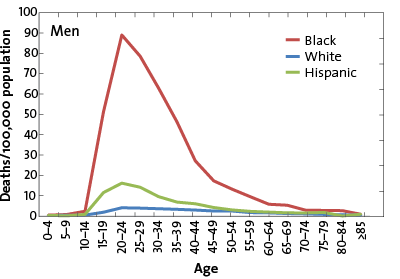
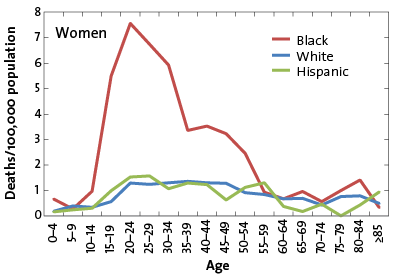
Which demographic has the highest gun suicide rate?
Answer: Older white males, by a long shot. The first chart shows the age breakdown for men in 2012; the second shows the same for women.
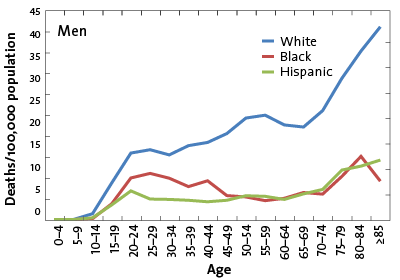
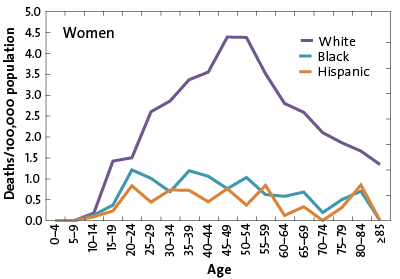
Which demographic has the highest number of firearm deaths?
Answer: Middle-aged white males have the highest absolute number of deaths per year; in the 50-54 age category alone, about 1,900 white men died in 2012. Overall, about 9,000 white men died in 2012, compared to about 6,000 black men.
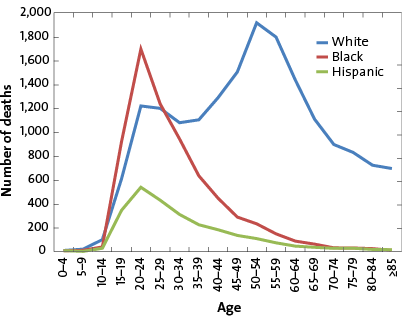
Which states have the highest gun homicide and gun suicide rates?
Answer: In 2012, Montana had the highest suicide rate, followed by Alaska, Idaho, and New Mexico. Louisiana had the highest homicide rate, followed by Mississippi, Alabama, and South Carolina.
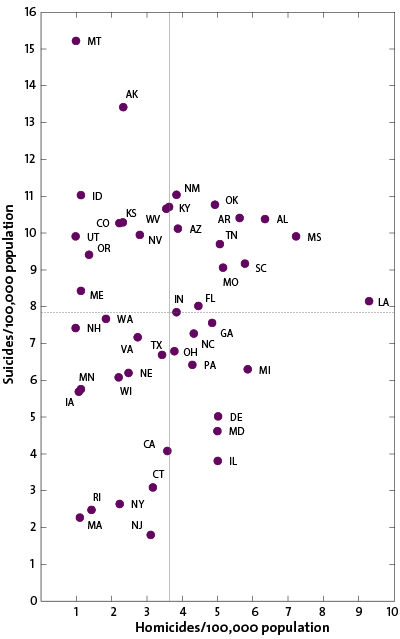
So, how does America compare to other nations when it comes to gun deaths?
Answer: Not well at all.
